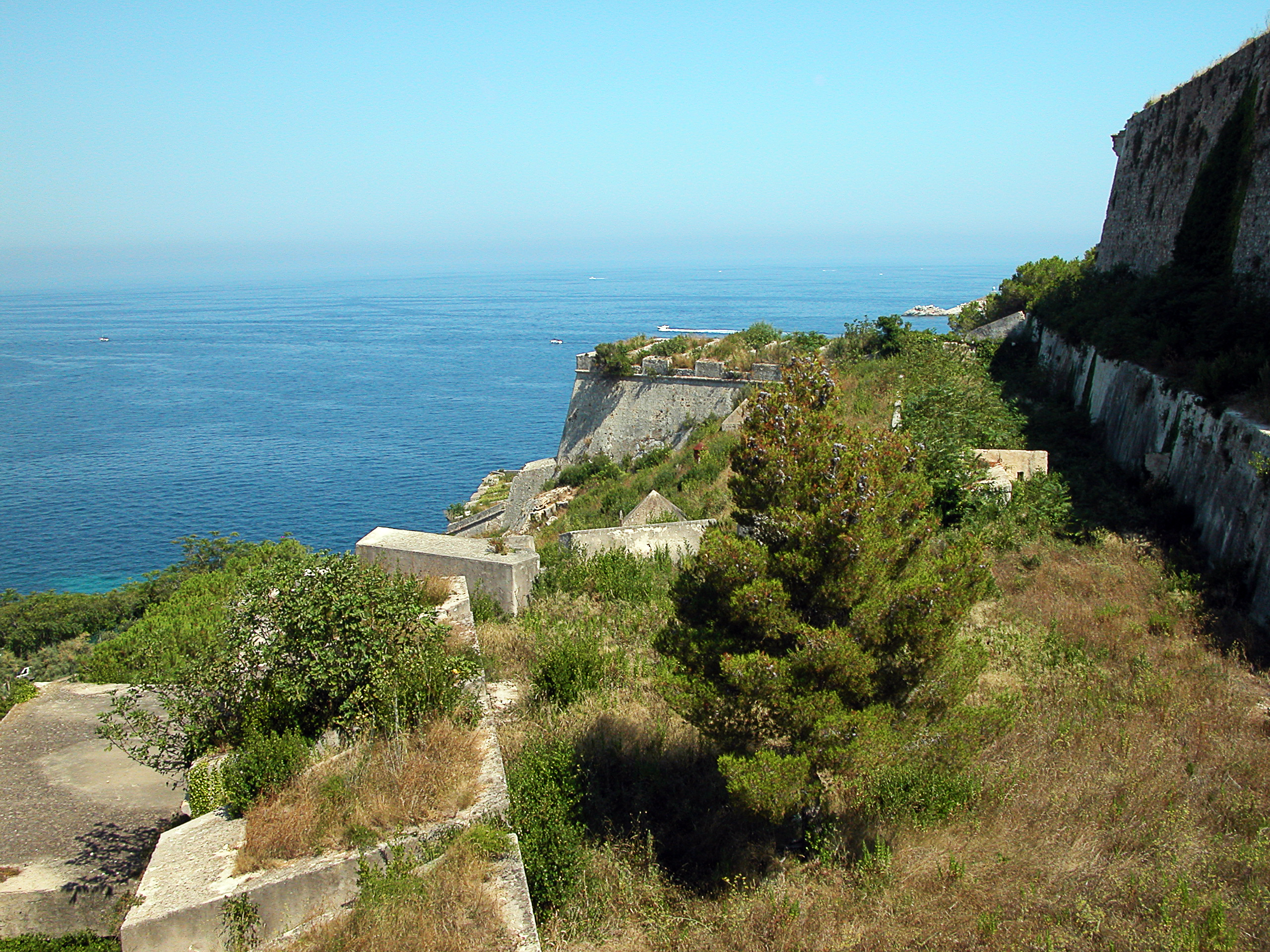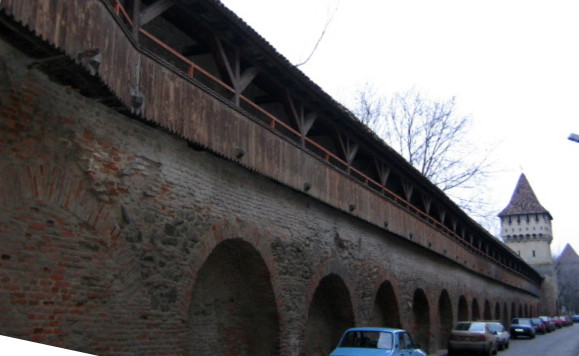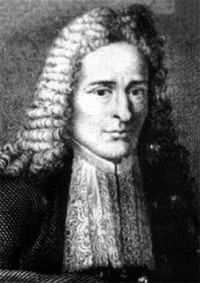|
Anton Maria Del Chiaro
Anton Maria Del Chiaro (born in 1669, died after 1727) was a Florentine Italian secretary of Constantin Brâncoveanu, the Prince of Wallachia. He is the author of a book on the history of Wallachia of his time, called ''Istoria delle moderne rivoluzioni della Valachia'' ("History of Modern Revolutions of Walachia"), dedicated to Pope Clement XI, written in Italian, and printed in Venice in 1718. Biography Much of what we know about Antonio Maria Del Chiaro is owed to Constantin Boroianu's well-documented article, “Nouvelles données sur Del Chiaro”, published in the Romanian journal ''Revue des Études sud-est européennes'' in 1972. Born in 1669, as David Teglia in a Jewish family of Livorno, Del Chiaro was converted and baptized Catholic at the age of 14 on December 17, 1683, at the Duomo of Florence; as it was customary, he took the name of his godfather, Leon Battista Del Chiaro. Antonio Maria Del Chiaro studied for a long time in Tuscany and Padua. Around 1700, he settle ... [...More Info...] [...Related Items...] OR: [Wikipedia] [Google] [Baidu] |
Florence
Florence ( ; ) is the capital city of the Italy, Italian region of Tuscany. It is also the most populated city in Tuscany, with 362,353 inhabitants, and 989,460 in Metropolitan City of Florence, its metropolitan province as of 2025. Florence was a centre of Middle Ages, medieval European trade and finance and one of the wealthiest cities of that era. It is considered by many academics to have been the birthplace of the Renaissance, becoming a major artistic, cultural, commercial, political, economic and financial center. During this time, Florence rose to a position of enormous influence in Italy, Europe, and beyond. Its turbulent political history includes periods of rule by the powerful House of Medici, Medici family and numerous religious and republican revolutions. From 1865 to 1871 the city served as the capital of the Kingdom of Italy. The Florentine dialect forms the base of Italian language, standard Italian and it became the language of culture throughout Italy due to ... [...More Info...] [...Related Items...] OR: [Wikipedia] [Google] [Baidu] |
Ștefan Cantacuzino
Ștefan Cantacuzino, (c. 1675 – 7 June 1716) was a Prince of Wallachia between April 1714 and January 21, 1716, the son of '' stolnic'' Constantin Cantacuzino. He was married to Păuna Greceanu-Cantacuzino. Life Ștefan was involved in his father's intrigue against Prince Constantin Brâncoveanu, denouncing him to the Ottoman Empire (Wallachia's overlord), and surrendering Brâncoveanu's secret correspondence with the Habsburg monarchy, enemies of the Porte in the Great Turkish War. After obtaining the Prince's deposition, he took the throne in Bucharest as an Ottoman appointee. His rule coincided with the Habsburg attack led by Prince Eugene of Savoy, during which the Cantacuzinos shook off Ottoman tutelage, informing Stephan Graf Stainville on the Porte's war preparations. A '' kapucu'' was sent to depose Prince Ștefan in January 1716, and arrested him together with his father and uncle (the '' spătar'' Mihai Cantacuzino). The three of them were executed in Constan ... [...More Info...] [...Related Items...] OR: [Wikipedia] [Google] [Baidu] |
18th-century Deaths
The 18th century lasted from 1 January 1701 (represented by the Roman numerals MDCCI) to 31 December 1800 (MDCCC). During the 18th century, elements of Enlightenment thinking culminated in the Atlantic Revolutions. Revolutions began to challenge the legitimacy of monarchical and aristocratic power structures. The Industrial Revolution began mid-century, leading to radical changes in human society and the environment. The European colonization of the Americas and other parts of the world intensified and associated mass migrations of people grew in size as part of the Age of Sail. During the century, slave trading expanded across the shores of the Atlantic Ocean, while declining in Russia and China. Western historians have occasionally defined the 18th century otherwise for the purposes of their work. For example, the "short" 18th century may be defined as 1715–1789, denoting the period of time between the death of Louis XIV of France and the start of the French Revoluti ... [...More Info...] [...Related Items...] OR: [Wikipedia] [Google] [Baidu] |
17th-century Births
The 17th century lasted from January 1, 1601 (represented by the Roman numerals MDCI), to December 31, 1700 (MDCC). It falls into the early modern period of Europe and in that continent (whose impact on the world was increasing) was characterized by the Baroque cultural movement, the latter part of the Spanish Golden Age, the Dutch Golden Age, the French '' Grand Siècle'' dominated by Louis XIV, the Scientific Revolution, the world's first public company and megacorporation known as the Dutch East India Company, and according to some historians, the General Crisis. From the mid-17th century, European politics were increasingly dominated by the Kingdom of France of Louis XIV, where royal power was solidified domestically in the civil war of the Fronde. The semi-feudal territorial French nobility was weakened and subjugated to the power of an absolute monarchy through the reinvention of the Palace of Versailles from a hunting lodge to a gilded prison, in which a greatly expa ... [...More Info...] [...Related Items...] OR: [Wikipedia] [Google] [Baidu] |
Elba
Elba (, ; ) is a Mediterranean Sea, Mediterranean island in Tuscany, Italy, from the coastal town of Piombino on the Italian mainland, and the largest island of the Tuscan Archipelago. It is also part of the Arcipelago Toscano National Park, and the third largest List of islands of Italy, island in Italy, after Sicily and Sardinia. It is located in the Tyrrhenian Sea about east of the French island of Corsica. The island is part of the province of Livorno and is divided into seven municipalities, with a total population of about 30,000 inhabitants which increases considerably during the summer. The municipalities are Portoferraio (which is also the island's principal town), Campo nell'Elba, Capoliveri, Marciana, Marciana Marina, Porto Azzurro, and Rio, Italy, Rio. It is famous for being the site of Napoleon's first exile, from 1814 to 1815. Geography Elba is the largest remaining stretch of land from the ancient tract that once connected the Italian peninsula to Corsica. The ... [...More Info...] [...Related Items...] OR: [Wikipedia] [Google] [Baidu] |
Portoferraio
Portoferraio () is a town and ''comune'' in the province of Livorno, on the edge of the eponymous harbour of the island of Elba. It is the island's largest town. Because of its terrain, many of its buildings are situated on the slopes of a tiny hill bordered on three sides by the sea. History It was founded by Cosimo I de' Medici, List of rulers of Tuscany, Grand Duke of Tuscany, in 1548, with the name of ''Cosmopoli'' ("Cosimo's City"), to balance the presence of the Spanish citadel in Porto Azzurro. It had three forts (Forte Stella, Forte Falcone, and Forte Inglese) and a massive line of walls, all still visible today. The name evolved from Ferraia in Etruscan civilization, Etruscan times, Fabricia with Romans and Ferraio with Grand Duchy of Tuscany. The city remained attached to the Grand Duchy of Tuscany until the late 18th century, when, due to its strategic position, it came into contention with France, United Kingdom, Great Britain, and Habsburg monarchy, Austria. A Br ... [...More Info...] [...Related Items...] OR: [Wikipedia] [Google] [Baidu] |
Sibiu
Sibiu ( , , , Hungarian: ''Nagyszeben'', , Transylvanian Saxon: ''Härmeschtat'' or ''Hermestatt'') is a city in central Romania, situated in the historical region of Transylvania. Located some north-west of Bucharest, the city straddles the Cibin River, a tributary of the Olt River. Now the seat of Sibiu County, between 1692 and 1791 and 1849–65 Sibiu was the capital of the Principality of Transylvania. Until 1876, the Hecht hause in Sibiu served as the seat of the Transylvanian Saxon University. Nicknamed ''The Town with Eyes'' for the eyebrow dormers on many old buildings, the town is a popular tourist destination. It is known for its culture, history, cuisine, and architecture. In 2004, its historical center was added to the tentative list of UNESCO World Heritage Sites. Sibiu was subsequently designated the European Capital of Culture in 2007, along with Luxembourg City. One year later, it was ranked "Europe's 8th-most idyllic place to live" by ''Forbes''. Sibi ... [...More Info...] [...Related Items...] OR: [Wikipedia] [Google] [Baidu] |
Prince Eugene Of Savoy
Prince Eugene Francis of Savoy-Carignano (18 October 1663 – 21 April 1736), better known as Prince Eugene, was a distinguished Generalfeldmarschall, field marshal in the Army of the Holy Roman Empire and of the Austrian Habsburg dynasty during the 17th and 18th centuries. Renowned as one of the greatest military commanders of his era, Prince Eugene also rose to the highest offices of state at the Imperial court in Vienna spending six decades in the service of three emperors. Born in Paris, to the son of a French count and a niece of Cardinal Mazarin, Eugene was raised at the court of King Louis XIV. Initially destined for the priesthood as the youngest son of a noble family, he chose to pursue a military career at 19. Due to his poor physique and possibly a scandal involving his mother, Louis XIV denied him a commission in the French Royal Army and forbade him from enlisting elsewhere. Embittered, Eugene fled France and entered the service of Emperor Leopold I, Holy Roman Empe ... [...More Info...] [...Related Items...] OR: [Wikipedia] [Google] [Baidu] |
Nicholas Mavrocordatos
Nicholas Mavrocordatos (, ; May 3, 1670September 3, 1730) was a Greek member of the Mavrocordatos family, Grand Dragoman to the Divan (1697), and consequently the first Phanariot Hospodar of the Danubian Principalities, Prince of Moldavia, and Prince of Wallachia (both on two occasions). He was succeeded as Grand Dragoman (1709) by his brother John Mavrocordato (Ioan), who was for a short while was hospodar in both Wallachia and Moldavia. Reigns Mavrocordatos was born in Constantinople. Deposed as Prince (Hospodar & Voievode) of Moldavia in favor of Dimitrie Cantemir, owing to the suspicions of his Ottoman overlord, Sultan Ahmed III, he was restored in 1711 (after Cantemir's rebellion during the Russo-Turkish War of 1710-1711), and, for this second rule, is considered the first in a line of Phanariotes in Moldavia (indicating that the election by the traditional Moldavian council of boyars was no longer enforced). Soon afterwards, he was replaced by Mihai Racoviță a ... [...More Info...] [...Related Items...] OR: [Wikipedia] [Google] [Baidu] |
Bucharest
Bucharest ( , ; ) is the capital and largest city of Romania. The metropolis stands on the River Dâmbovița (river), Dâmbovița in south-eastern Romania. Its population is officially estimated at 1.76 million residents within a greater Bucharest metropolitan area, metropolitan area of 2.3 million residents, which makes Bucharest the List of cities in the European Union by population within city limits, 8th most-populous city in the European Union. The city area measures and comprises 6 districts (''Sectors of Bucharest, Sectoare''), while the metropolitan area covers . Bucharest is a major cultural, political and economic hub, the country's seat of government, and the capital of the Muntenia region. Bucharest was first mentioned in documents in 1459. The city became the capital in 1862 and is the centre of Romanian media, culture, and art. Its architecture is a mix of historical (mostly History of architecture#Revivalism and Eclecticism, Eclectic, but also Neoclassical arc ... [...More Info...] [...Related Items...] OR: [Wikipedia] [Google] [Baidu] |
Constantin Brâncoveanu
Constantin Brâncoveanu (; 1654 – August 15, 1714) was List of Wallachian rulers, Prince of Wallachia between 1688 and 1714. Biography Ascension Constantin Brâncoveanu was the son of Pope Brâncoveanu (Matthew) and his wife, Stanca Cantacuzino. Maternally, he was a descendant of the noble Greeks, Greek family Cantacuzino family, Cantacuzino. Paternally, he was a descendant of the Craiovești boyar family and heir through his grandfather Preda of a considerable part of Matei Basarab′s fortune. Brâncoveanu was born on the Estate (land), estate of Brâncoveni and raised in the house of his uncle, ''stolnic'' Constantin Cantacuzino (stolnic), Constantin Cantacuzino. He rose to the throne after the death of his uncle, prince Şerban Cantacuzino. He was initially supported by his maternal uncles Constantin and Mihai Cantacuzino, but grew increasingly independent from them in the course of his reign. Constantin Cantacuzino retreated to one of his estates and began advocatin ... [...More Info...] [...Related Items...] OR: [Wikipedia] [Google] [Baidu] |
Antonio Vallisneri
Antonio Vallisneri (3 May 1661 – 18 January 1730), also rendered as ''Antonio Vallisnieri'', was an Italian medical scientist, physician and naturalist. Life Vallisneri was born in Trassilico, a small village in Garfagnana, and graduated in medicine in 1684, in Reggio Emilia, under the guidance of Marcello Malpighi. A grand-uncle was the physician Cesare Magati. He studied at Bologna, Venice, Padua and Parma and held the chairs of Practical Medicine first and Theoretical Medicine later at the University of Padua between 1700 and his death. Influenced by famous thinkers such as Leibniz and Conti he belonged to the Galilean school of experimental scientists. He worked in biology, botany, veterinary medicine, hydrology and the newly born science geology. Vallisneri died in Padua in 1730. Importance He is known for being one of the first researchers in medicine to have proposed abandoning the Aristotelian theories for an experimental approach based on the scientific princ ... [...More Info...] [...Related Items...] OR: [Wikipedia] [Google] [Baidu] |






